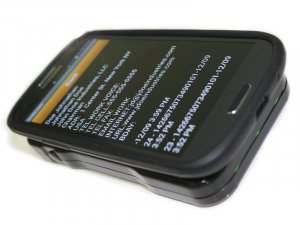A decade or more ago, the exchange of information between trade show exhibitors and attendees consisted of a mutual handing over of business cards and stuffing of the show tote bag with glossy brochures. It was an inefficient process that left many leads and sales on the table.
Today, a full range of tools for a two-way (digital) exchange of information is available to exhibition participants. They make a brief meeting in the booth more productive and create a digital trail that helps exhibitors track the ROI of exhibiting.
The drawbacks of business cards
It’s fair to say that business cards have changed little over the years. With a few exceptions—those that come in different shapes, orientations, or as USB drives—most are still made of thick rectangular paper. The majority do little besides offer the barest of details about the cardholder.
In the digital age, business cards alone as information exchange systems are fraught with shortcomings. Exhibitors want to capture more than contact information. They also want customer insights, critiques, and challenges. And they need to be able to deliver product information, deepen relationships, and jumpstart the sales process. Business cards cannot accomplish those goals.
Even the claim that business cards can help exhibitors leverage chance meetings with prospects outside the booth is no longer valid. Exhibitors want the full breadth of information exchange apps wherever they are—in the booth, at a networking event, or on the shuttle bus.
The benefits of digital information exchange systems
Information exchange systems have two components:

Swiftium Android Wireless Scanner
E-literature applications allow attendee prospects to select which digital product brochures and spec sheets to receive on the spot. Many also integrate with CRM and marketing automation systems to track content downloads and support lead nurturing.
An automated lead capture system combined with an e-literature application offers a treasure trove of data to exhibitors:
- Contact information
- Attendee demographics
- Interest in buying
- Time frame for buying
- Product preferences
- Record of product information consumed
- Post-show contact history with the sales staff
There are also advantages to using lead capture tools that aren’t provided by the registration contractor (which varies with each exhibition). Exhibitors can maintain data and consistency of process by using one system that travels with them from show to show.
Business cards, like most paper associated with exhibitions (show directories, brochures, maps and signage), are slowly being replaced by mobile applications and digital data ecosystems. It’s not that business cards are irrelevant. It’s that exhibitors demand more data and functionality than they can offer. For more information on how to create a digital information exchange system for your next event, contact the experts at SmartSource Rentals.
